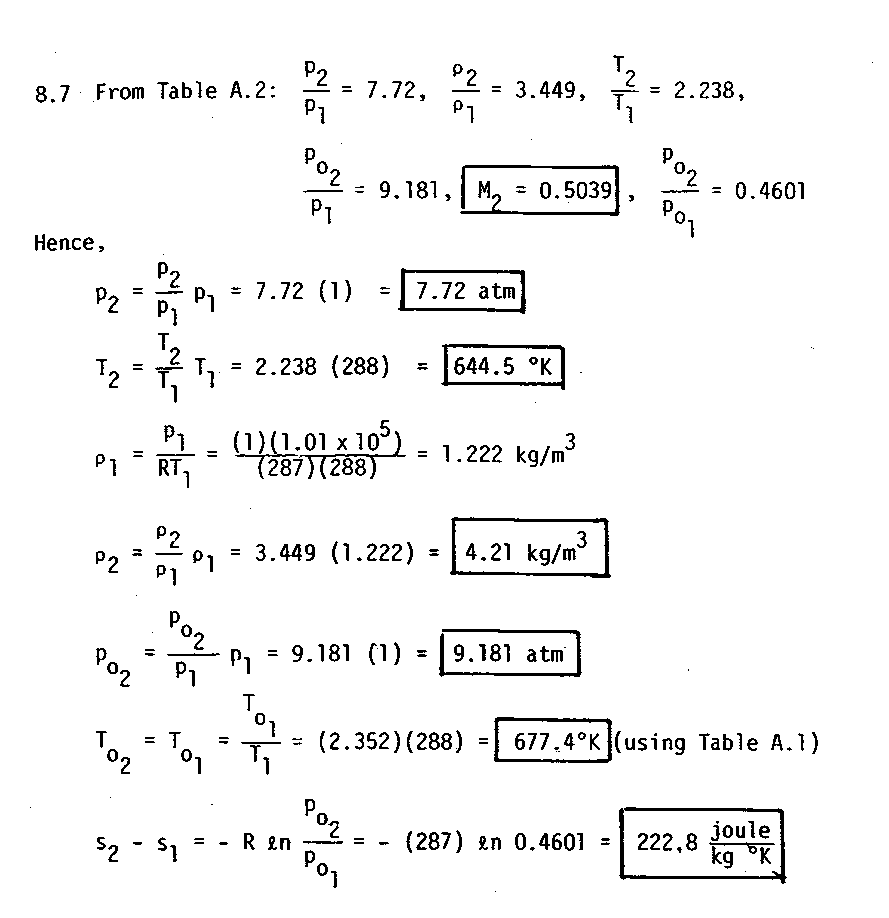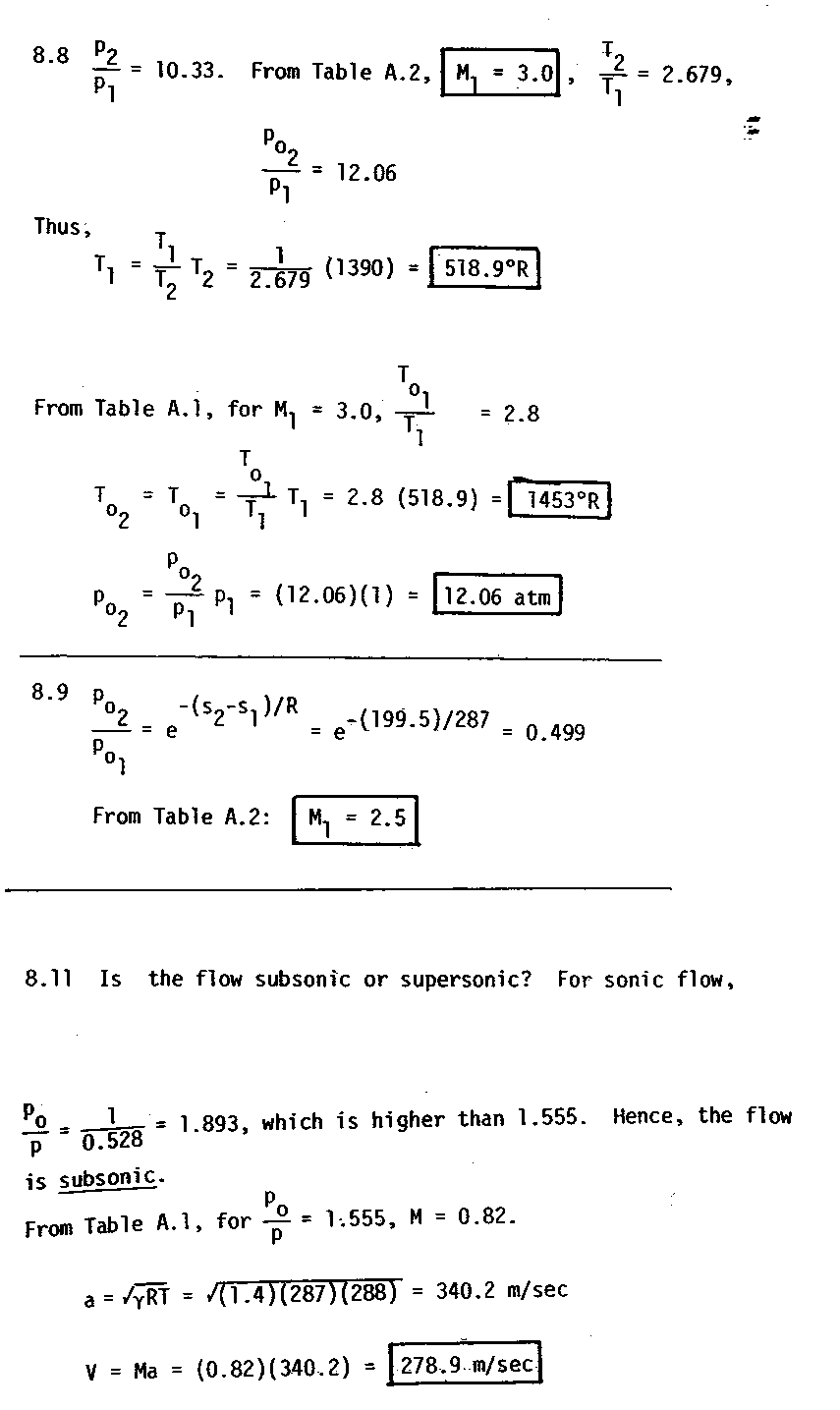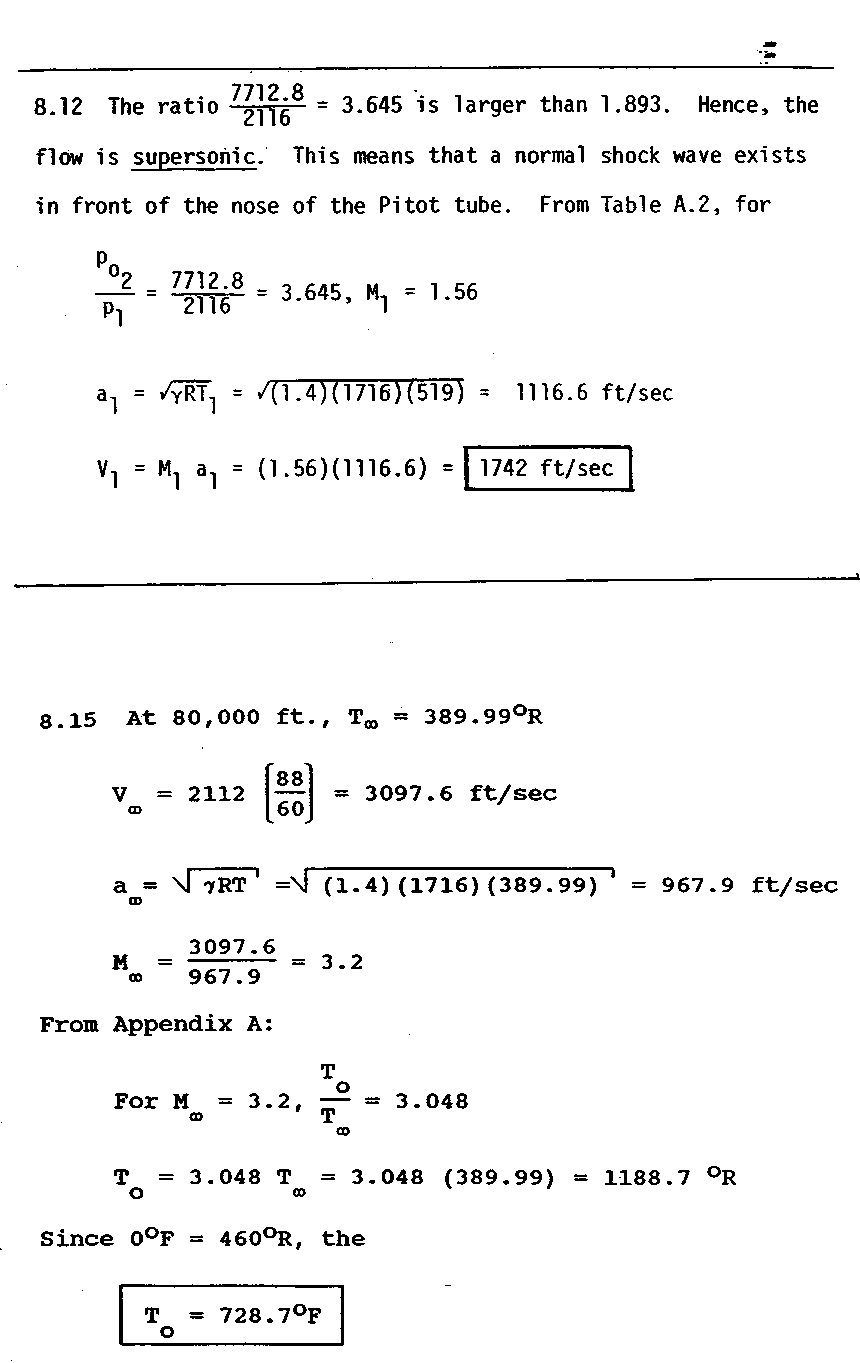MAE 3303 Aerodynamics of Compressible Flow
Homework 4 Solution
Answers to Study Questions
- What can always be said about the Mach number behind a normal shock
wave?
ans: It will be less than one (subsonic).
- Indicate whether each of the following quantities goes up, down, or
remains the same as the flow crosses a shock wave. Mach number, velocity,
density, pressure, temperature, entropy, stagnation temperature, stagnation
pressure.
ans: Mach number goes down, velocity goes down, density goes up, pressure
goes up, temperature goes up, entropy goes up, stagnation temperature stays
the same, stagnation pressure goes down.
- Why is an ëxpansion shock" (increase in Mach number across the wave)
not possible?
ans: An expansion shock is not possible since it would result in a decrease
in entropy.
- The loss in total pressure across a shock is directly related to what
other important thermodynamic variable?
ans: The change in entropy.
- At Mach 4.5 what percentage of upstream total pressure remains downstream
of the shock? Where did all the upstream kinetic energy go?
ans: Only 9.2 %. Kinetic energy has been converted irreversibly into
internal energy as a result of the shock process.
- What quantity does a pitot-static tube measure in a compressible
subsonic flow? What additional information is needed to measure velocity?
ans: Mach number. The temperature must also be measured in order to determine
the velocity.
- What complicating factor must be taken into account in reading
a pitot-static tube in a supersonic flow?
ans: The presence of a bow shock in front of the tube.
- What is a Mach wave?
ans: An infinitely weak shock wave with normal component of Mach number
equal to 1.
- What is the Mach angle?
ans: The angle between the velocity vector and the Mach wave. Using the
condition the the normal mach number is 1, we have m = sin-1(1/M).
- Why are the 1-D integral forms of the conservation laws not appropriate
for the analysis of an oblique shock wave?
ans: Because the flow direction changes as the flow crosses the wave; the
flow m ust have two velocity components downstream if the coordinate system
is aligned with the velocity ahead of the wave.
- What happens to the velocity component parallel to an oblique shock as
it passes through? (i.e. goes up, down, or stays the same.)
ans: Stays the same.
- What happens to the velocity component normal to an oblique shock as
it passes through? (i.e. goes up, down, or stays the same.)
ans: Goes down.
- Will the velocity vector have the same direction as the flow crosses
an oblique shock? Explain your answer.
ans: No. The tangential component is unchanged whereas the normal component
is reduced, thus the direction of the velocity vector is different downstream
of the wave.
- What modification is needed in order to use the normal shock jump
relation s for an oblique shock?
ans: The Mach number must be replaced with the component normal to the wave.
- The Mach number downstream of a normal shock is always subsonic. Is
the same true for an oblique shock? Explain your answer.
ans: No. The downstream Mach number is given by M2n/sin(b-q).
Although M2n is less than 1, the division by sin(b-q) can
(and usually does) result in a supersonic flow downstream of the shock.
- Which solution is usually observed, the weak or strong oblique shock?
ans: The weak one.
- Under what condition will a strong oblique shock solution be present.
ans: When the flow is subject to some additional blockage downstream that
requires the flow to be subsonic.
- What is the meaning of the maximum flow turning angle, qmax?
ans: It is the maximum turning angle for which an attached oblique shock is
possible for the given Mach number.
- What will happen if we attempt to turn a supersonic flow through an
angle greater than qmax for a given Mach number?
ans: A curved bow shock will form ahead of the obstacle.
- How will the change in entropy compare between a M = 2 normal shock
and a M = 2 oblique shock at angle 150?
ans: The entropy rise for the Oblique shock will be less since the normal
Mach number is roughly 1.4.



File translated from TEX by TTH, version 2.00.
On 18 Feb 2000, 14:00.



